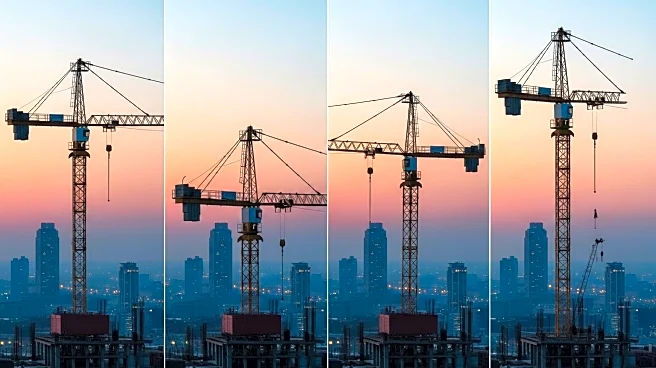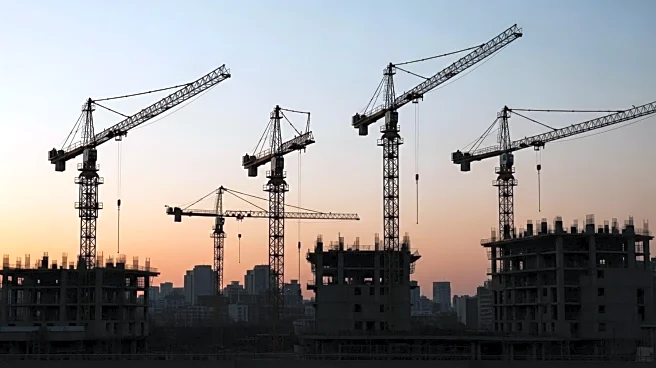What's Happening?
A recent biannual report by Rider Levett Bucknall reveals a significant 44% decrease in the number of construction cranes across 16 major North American cities. This decline, amounting to a reduction of eight cranes collectively, reflects a cautious approach in the construction industry amid economic uncertainties. The report highlights that while seven cities experienced a decline in crane activity, six cities maintained their levels, and four cities saw an increase. Notably, New York City saw its crane count drop from nine to six, and Los Angeles experienced a decrease from 42 to 26 cranes. The changes are attributed to the completion of major commercial and cultural projects, although there is a modest uptick in transportation-related construction in Los Angeles. Conversely, cities like Chicago, Denver, San Francisco, and Calgary, Alberta, reported increases in crane activity.
Why It's Important?
The decline in crane activity is indicative of broader economic trends affecting the construction industry. The hesitancy in large-scale construction projects suggests that developers are carefully evaluating opportunities against financial pressures. This trend could impact various sectors, including commercial real estate, infrastructure development, and urban planning. The decrease in construction activity may lead to slower economic growth in affected cities, potentially influencing job markets and local economies. However, the report also notes growth in specific sectors such as education, federal, and transportation, which could offset some of the negative impacts. Stakeholders in the construction and real estate industries will need to navigate these challenges while seeking opportunities in emerging markets.
What's Next?
As the construction industry adapts to economic uncertainties, stakeholders may focus on sectors showing growth potential, such as transportation and education. Developers might prioritize projects with stable funding sources or those aligned with government initiatives. The industry could also see increased collaboration with public entities to leverage infrastructure investments. Monitoring economic indicators and policy changes will be crucial for industry players to make informed decisions. Additionally, cities experiencing growth in crane activity may serve as models for strategic development in other regions.












